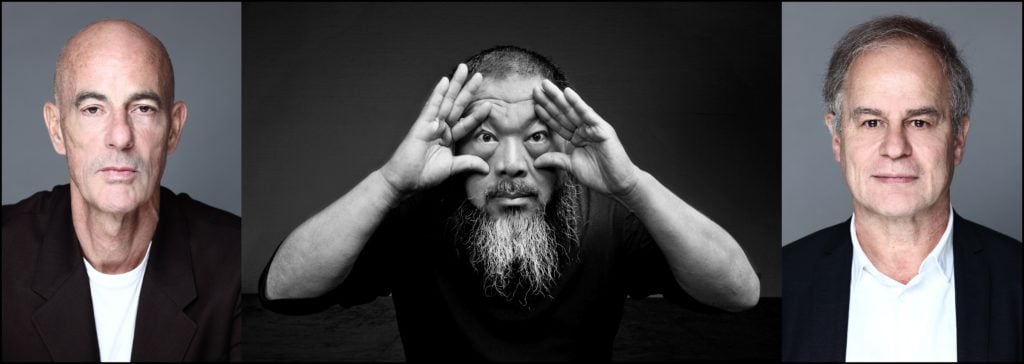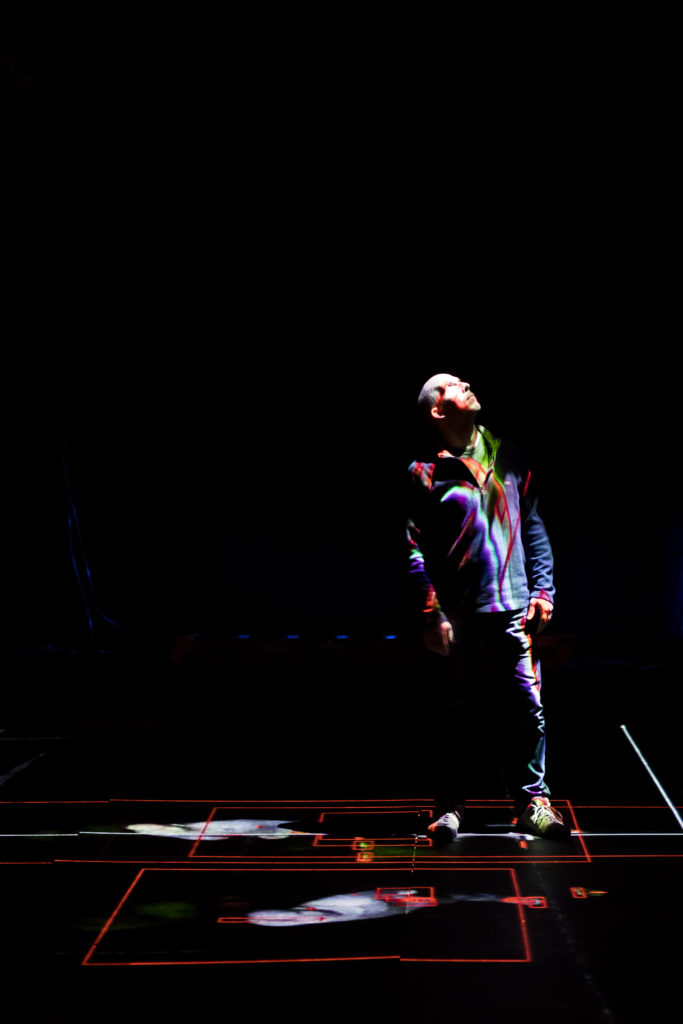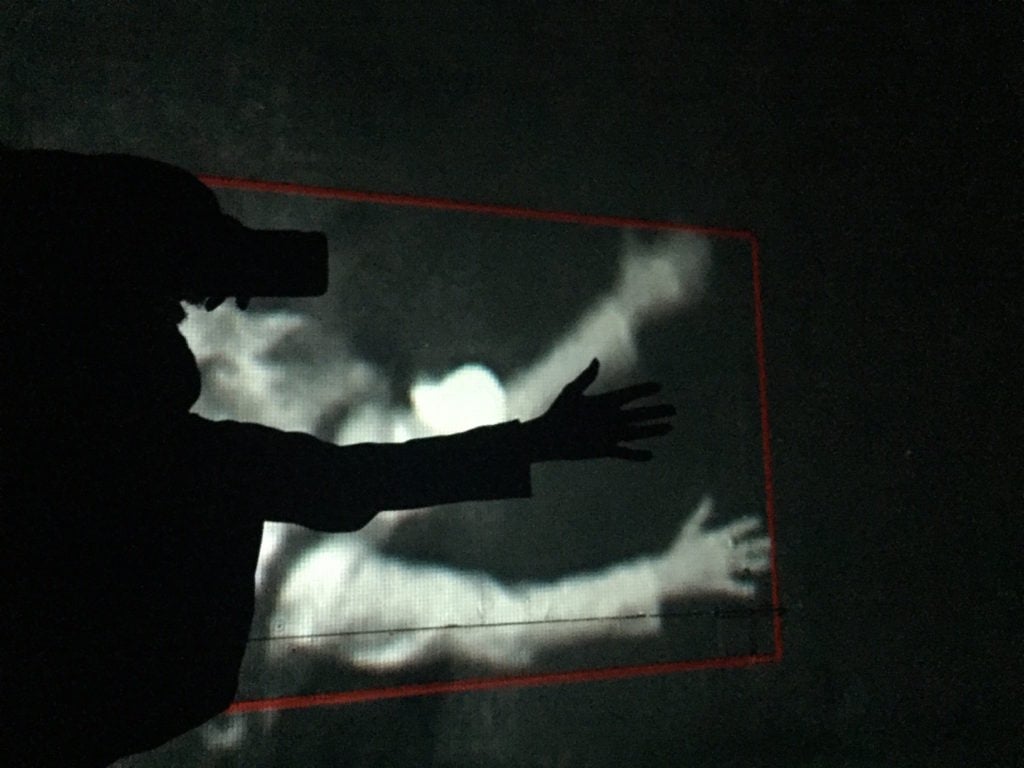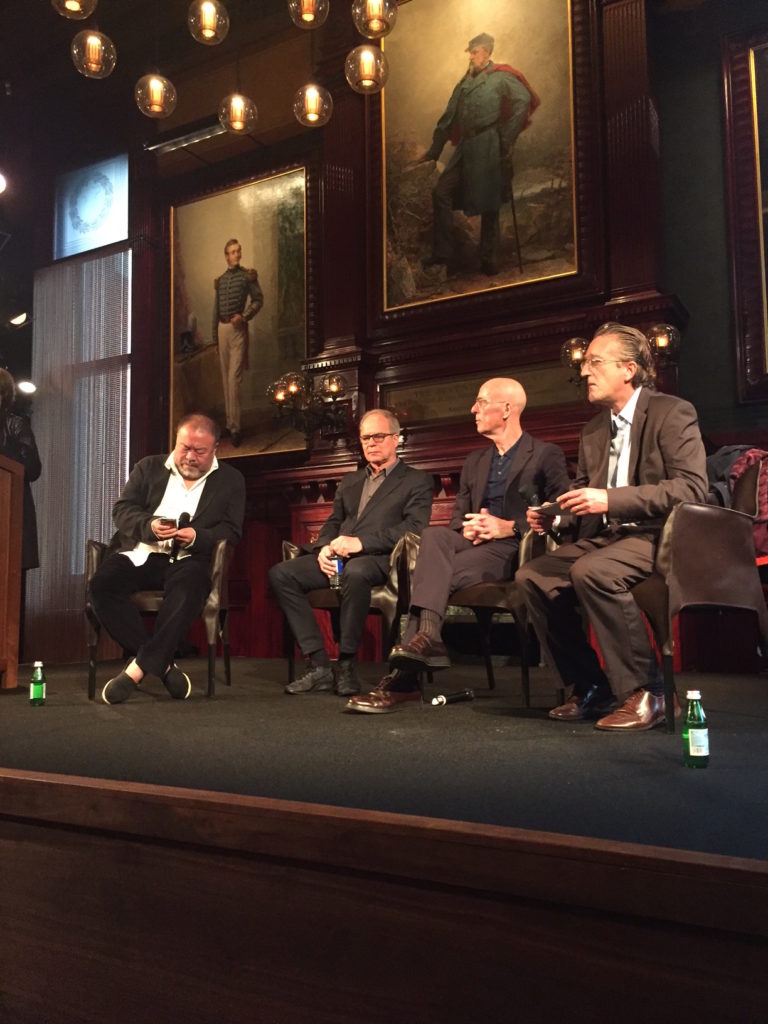On View
Ai Weiwei Transforms the Park Avenue Armory Into a High-Tech Surveillance State (and It’s Fun!)
The artist teamed up with Herzog & de Meuron to create an installation that ultimately feels hollow.

The artist teamed up with Herzog & de Meuron to create an installation that ultimately feels hollow.

Eileen Kinsella

If you weren’t already aware that you should not expect a shred of privacy when you step outside your door each day, Chinese art star Ai Weiwei and Swiss starchitects Jacques Herzog and Pierre de Meuron are here to school you. Their new colossal art installation, titled Hansel & Gretel, presented at the Park Avenue Armory, does everything to incite the senses with flashing lights and gizmos, but refrains from tackling the more complicated issues surrounding surveillance today.
While decidedly thought-provoking, the work fails to offer solutions or answers to the obvious “Big Brother” questions, which leaves it feeling a bit superficial, albeit selfie-friendly.

Mockup of installation detail of “Hansel & Gretel” at Park Avenue Armory. Photo by James Ewing.
After entering the building from an alternate entrance on the Lexington Avenue side—which seasoned Armory devotees will recognize as a departure from the grand, banner-draped Park Avenue entrance—visitors wander through several dimly lit, dark black hallways until they enter the main drill hall.

Installation view of “Hansel & Gretel” at Park Avenue Armory. Photo by James Ewing.
It takes a few moments before your eyes adjust to the darkness, but once they do, you immediately slip into the quiet contemplative atmosphere, with the sounds of drones buzzing above as you discern lit grids of light inside of the football field-sized space. As you move through the area, trying to take it in, you immediately start to see images of yourself projected on the floor and shot from dozens of ceiling-mounted cameras high above.

Installation view. Photo Eileen Kinsella
The uncertainty of exactly what the cameras and drones are capturing unconsciously prompts you to start experimenting with how you move and exactly what is being documented—you extend your arms, spin around, look up, sit down, move forwards and backwards, and perhaps double back within a few minutes to see what evidence of your presence remains.
One especially disconcerting moment for this reporter came when I attempted to stand still outside of one of the lit grids. As soon as I veered beyond the illuminated boundary, a series of heat-seeking red squares seemed to race over and “find” me.
It left me feeling like there was nowhere to hide—but beyond the initial response, the stakes are low. The experience is as much an exercise in technological trickery as an incisive exploration of the surveillance state. And it seems perhaps more likely to serve as an amusement park-style destination for kids and adults alike than a place that will make them look differently at the world around them on the subway ride home.
Applying this technology to real life, however, is truly terrifying—a fact that the artist himself drove home during a brief panel discussion yesterday with the collaborator architects, Jacques Herzog and Pierre de Meuron, and curator Tom Eccles. (Co-curator Hans Ulrich-Obrist was not in attendance.)

From left, Ai Weiwei, Pierre de Meuron, Jacques Herzog, and Tom Eccles. Photo by Eileen Kinsella
Eccles pointed out that the idea for the project first took shape years ago, before Weiwei was in fact under surveillance in China and not allowed to leave the country. (He had already collaborated with Herzog & de Meuron for the now iconic Bird’s Nest stadium for the 2008 Olympics in Beijing.)
“Obviously, being under surveillance went from a theoretical proposition to a very real one,” Eccles said. “You were unable to leave China to come here. Maybe you can speak a little bit about your personal experience being under surveillance.”
Weiwei responded: “I think we all have personal experience being under surveillance. The character of surveillance is to see only one side of the story.” The artist suggested that the current show will allow visitors to experience other aspects of the process and “even to enjoy the process and understand the reality.”
“Hansel & Gretel” is on view at the Park Avenue Armory through August 6.